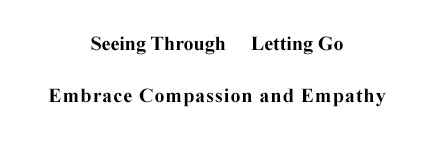In this post, we continue to verify Citta through the enlightenment experiences of two well-known Dharma Masters in China.
1) Dharma Master Hui-Neng
We discussed Dharma Master Hui-Neng (638-713 AD) when verifying the consummate self-nature of the Ultimate Reality. His story stopped the last time when he hid among a group of hunters as their cook for fifteen years. This post starts when he emerged 15 years later and traveled south to Guang Zhou.
One day in Guan Zhou, the Dharmas Master went to the monastery where Dharma Master Yin Zon was expounding Mahāyāna Mahāparinirvāṇa Sūtra (Chinese=大般涅槃經), which is “a Mahāyāna Buddhist sutra of the Buddha-nature genre.” During the session, the wind blew, and the banner hanging from the post fluttered. At that point, two monks began to debate a lot about whether it was the wind blowing or the banner beating (Chinese=時有風吹幡動,一僧云:風動。一僧云:幡動。議論不已.”
Upon hearing the monks, Dharma Master Hui-Neng offered his opinion, “It is neither the wind blowing, nor is it the banner fluttering, it is your benevolent minds moving (Chinese=不是風動,不是幡動,仁者心動.”
Upon hearing the exchange, the mass was aghast (Chinese=一眾駭然).
Dharma Ying Zon, however, was fully aware of the significance of the statements. He went up to Dharma Master Hui-Neng and confirmed that the person before him was indeed the rumored heir to the Fifth Patriarch of Chan Buddhism. He then turned around, paid the Sixth Patriarch his respect, and asked to be his student.
These few words that Dharma Master Hui-Neng uttered showed his enlightenment because he completely understood the role active mentality plays in manifesting the universe. Only an enlightened person could speak with such certainty and authority that, without minds moving, there would be no banners to flutter nor wind to blow.
3) Grandmaster Yong Jia (Chinese=永嘉大師)
Grandmaster Yong Jia (665-713) of the Tang Dynasty, also known as YongJia Xuanjue (永嘉玄覺), was a grandmaster in both Chan and Tiantai Buddhism. While Dharma Master Hui-Neng practiced Chan-style meditation, Tiantai Buddhism focused on Samathavipasyana meditation. Grandmaster Yong Jia was an expert in both meditative techniques.
Grandmaster YongJia is best known for his Songs of Enlightenment (Chinese=證道歌), a lengthy singable poem, the central theme of which is “the contrast between dharma-nature, or reality as it is, versus buddha-nature, or self-nature.” He was a student of Master Hui-Neng. His enlightenment was acknowledged while he stayed at Master Hui-Neng’s temple overnight.
The most well-known phrases in the long poem are the ones that show that the Grandmaster was enlightened. They are, “When dreaming, the Six Destinies obviously exist; after enlightenment, everything is empty, including the Trichilicosm.” (Chinese=夢裏明明有六趣. 覺後空空無大千).
“Dreaming” is similar in meaning to “deep sleep.” Both refer to the state of unenlightenment versus the state of enlightenment when a person is said to be “awake.”
Six Destinies (Romanized Sanskrit=sadgati; Chinese=六趣) are the six possible destinies of determinative birth and death cycles, which all the unenlightened must undergo.
According to The Princeton Dictionary of Buddhism, Trichilicosm can be understood as “the largest possible universe.” Together with the Six Destinies, Trichilicosm indicates the domain of unenlightenment.
By acknowledging that “When dreaming, the Six Destinies obviously exist; after enlightenment, everything is empty, including the Trichilicosm,” the Grandmaster showed his enlightenment because he witnessed the disappearance of the universe upon enlightenment. Like Adyashanti, without the Six Destinies and the Trichilicosm, he was in a “void.”
Furthermore, the fact that Buddha was enlightened 2600+ years ago in modern-day Nepal, Dharma Master Hui-Neng and Grandmaster Zhang Ja were enlightened in China centuries ago, and Adyashanti is a contemporary enlightened person in America all confirm Buddha’s teaching the Ultimate Reality is spread throughout the universe. With Citta everywhere, the “object” of enlightenment is always ready for the “subject” to be enlightened anytime and anywhere. As this List of Enlightened People shows, enlightened people are spread worldwide.


